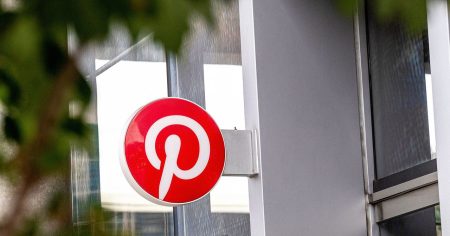Sarah Kellogg Neff is CEO of The Lactation Network, a national provider of insurance-covered lactation care.
I’ve always found it odd that hiring managers, C-suite executives and recruiters mention creativity, innovation and a willingness to disrupt the status quo as attributes they want to see in new hires.
Those qualities don’t just materialize out of thin air. They’re not magically bestowed upon a select few. They aren’t innate. They also aren’t rare.
There is a real, true case to be made that everyone at your company is a possible source for your next great idea—they just have to feel supported enough to lean into those opportunities.
An Egalitarian Outlook Creates Equitable Workplaces eople tend to think employees are either creative or they’re not. They’re either the next Amanda Gorman, or they’re not. But I’ve always believed that disruptors like Marian Croak, the vice president of engineering at Google, are here not only because an ember glows within them but also because somewhere along the way, they were immersed in the right structure and received the right inputs to fan their internal flame.
Whether you’re a leader, middle manager or individual contributor, you can create a culture that fosters creativity and innovation. No one has a monopoly on these outputs, and these outputs aren’t rare. It’s just rare to encounter environments that cultivate the safety, support and agency required to help employees grow into their potential.
When we realize that anyone—yes, anyone—has the capacity to embody the best of what we aspire to be, it changes the way we hire, train, guide, lead and promote. It changes how we think about ourselves and about each other.
The Case For Building The Right Space
In 2021, McKinsey & Company posited that rising connectivity within our workplaces speeds up disruption and that free-moving information bypasses and challenges existing hierarchies. McKinsey also observed that nearly two centuries of management perspectives on control and predictability are on the precipice of obsolescence.
When we’re connected, the impossible feels possible. When we don’t encounter siloed gate-keeping or bottlenecking of information in our workplaces, we can operate with more certainty. When we embrace flexibility to allow humans to work in ways that are conducive to their productivity, we get predictably positive results.
At my company, we’re seeing those results in real time. For instance, I’m now traveling to Washington, D.C., regularly to help craft federal legislation because a year ago, at the height of the baby formula crisis, one of my colleagues started writing her senators.
Then there’s the work that intangibly fuels our team but requires trust and agency to bear fruit. A member of our marketing team worked from Europe for the duration of the summer this year after using her professional development stipend to learn French. She’s since conversed with Parisian mothers who have helped her tell more robust stories about maternal healthcare in the United States. Thanks to the flexibility of asynchronous work and healthy communication, she’s been to four countries in eight weeks and has likely absorbed enough inspiration to fill her creative cup for the next eight months.
She’s not the only one. Every member of our organization is granted the time and space to deeply immerse themselves in new experiences both within and beyond their professional lives, and those adventures translate to innovative solutions they design for the families we help. We’re resolutely cross-functional because we know that great ideas come from anywhere.
The Long Game
When you invest in everyone, you truly do invest in everyone. A strong workplace culture means that your junior graphic designer can be just as much an innovator as your tenured chief technology officer. From a content brief to the high-stakes board meeting, creativity is born from the work your organization does to create safe spaces to take risks.
That doesn’t happen overnight. The right environment requires asking the right questions: What processes have you put in place to cultivate creativity and innovation in your organization? Are you keeping your meetings small, intimate and nimble to allow everyone, no matter how introverted, to offer feedback? What about implementing no-meeting Wednesdays or speedy meetings so folks have the time to get back to deep, illuminating work? How do you offer pre-meeting clarity so folks can be sure the hard questions will be posed, grappled with and resolved?
Fundamentally, do your employees feel trusted to do their jobs? How do you invite participation? How do you say no to someone’s idea? What happens when someone on your team makes a mistake? Trust and autonomy cultivate courage. Courage creates space for creativity, which is all about connecting otherwise disconnected ideas: grabbing an idea from over there and bringing it over here.
If you’re an organizational leader and you don’t have a clear read on those answers, then your employees are probably clear enough on the message you’ve already sent. But day by day, week by week, opportunities abound to create cultural safety and support at your organization. Once committed, the creative, innovative, inspired employees you’re looking for will likely be just a conference call away.
Forbes Business Council is the foremost growth and networking organization for business owners and leaders. Do I qualify?
Read the full article here










